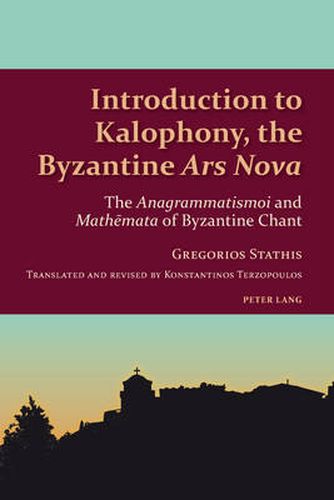Readings Newsletter
Become a Readings Member to make your shopping experience even easier.
Sign in or sign up for free!
You’re not far away from qualifying for FREE standard shipping within Australia
You’ve qualified for FREE standard shipping within Australia
The cart is loading…






This title is printed to order. This book may have been self-published. If so, we cannot guarantee the quality of the content. In the main most books will have gone through the editing process however some may not. We therefore suggest that you be aware of this before ordering this book. If in doubt check either the author or publisher’s details as we are unable to accept any returns unless they are faulty. Please contact us if you have any questions.
The anagrams, or more generally, the mathemata and morphologically related kalophonic forms of Byzantine melopoeia, constitute the artistic creations by which Psaltic Art is known in all its splendour and becomes an object of admiration. Kalophony as ars nova was born following the recovery of the city of Constantinople after the Latin occupation of Byzantium (AD 1204-1261) during the long reign of Andronicus II (1282-1328) and reached its final form in the first half of the fourteenth century. During the years 1300-1350, four key composers and teachers of the Psaltic Art imposed a new attitude of melic composition on the preexisting forms and designated new compositional techniques dominated by the beautifying kallopistic element. They created new compositions in the new spirit of kallopismos and musical verbosity. This new musical creation was christened with the term kalophony and this period is the golden age of Byzantine Chant.
Originally published under the title
Hoi anagrammatismoi kai ta mathemata tes byzantines melopoiias (1979 plus seven reprints), this publication thoroughly investigates and reveals for the first time the entire magnitude of Byzantine kalophony with its individual forms, serving as a systematic introduction to the Greek Byzantine music culture and that of the Byzantine Psaltic Art at the height of its expression.
$9.00 standard shipping within Australia
FREE standard shipping within Australia for orders over $100.00
Express & International shipping calculated at checkout
This title is printed to order. This book may have been self-published. If so, we cannot guarantee the quality of the content. In the main most books will have gone through the editing process however some may not. We therefore suggest that you be aware of this before ordering this book. If in doubt check either the author or publisher’s details as we are unable to accept any returns unless they are faulty. Please contact us if you have any questions.
The anagrams, or more generally, the mathemata and morphologically related kalophonic forms of Byzantine melopoeia, constitute the artistic creations by which Psaltic Art is known in all its splendour and becomes an object of admiration. Kalophony as ars nova was born following the recovery of the city of Constantinople after the Latin occupation of Byzantium (AD 1204-1261) during the long reign of Andronicus II (1282-1328) and reached its final form in the first half of the fourteenth century. During the years 1300-1350, four key composers and teachers of the Psaltic Art imposed a new attitude of melic composition on the preexisting forms and designated new compositional techniques dominated by the beautifying kallopistic element. They created new compositions in the new spirit of kallopismos and musical verbosity. This new musical creation was christened with the term kalophony and this period is the golden age of Byzantine Chant.
Originally published under the title
Hoi anagrammatismoi kai ta mathemata tes byzantines melopoiias (1979 plus seven reprints), this publication thoroughly investigates and reveals for the first time the entire magnitude of Byzantine kalophony with its individual forms, serving as a systematic introduction to the Greek Byzantine music culture and that of the Byzantine Psaltic Art at the height of its expression.